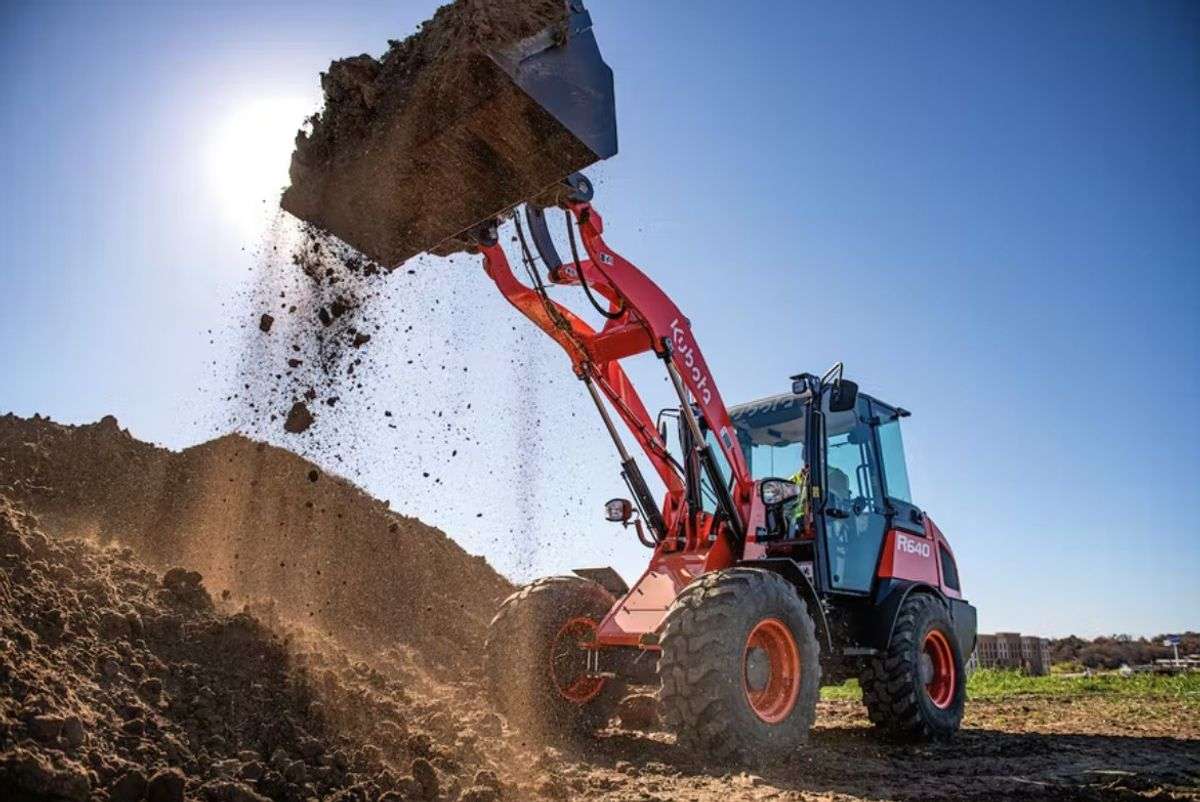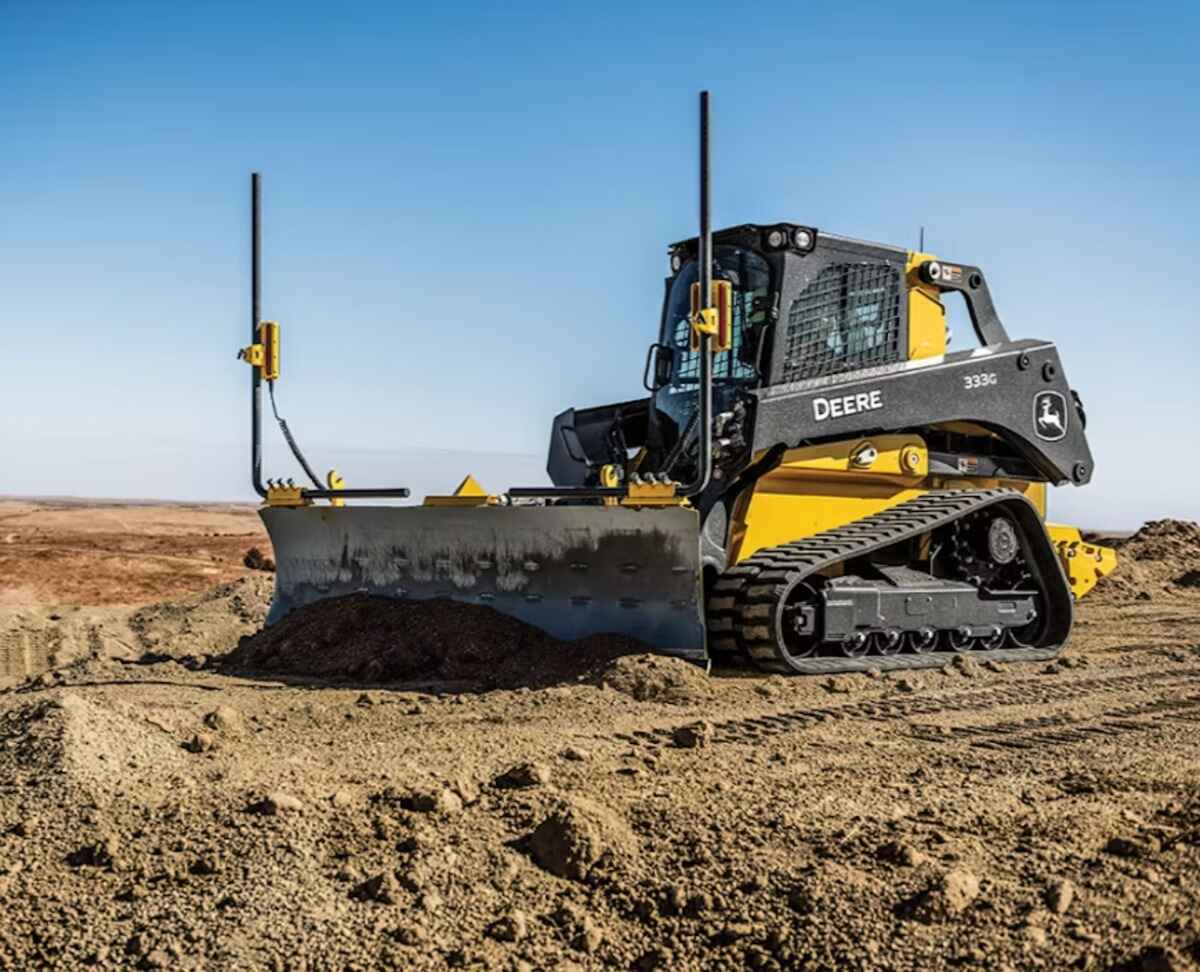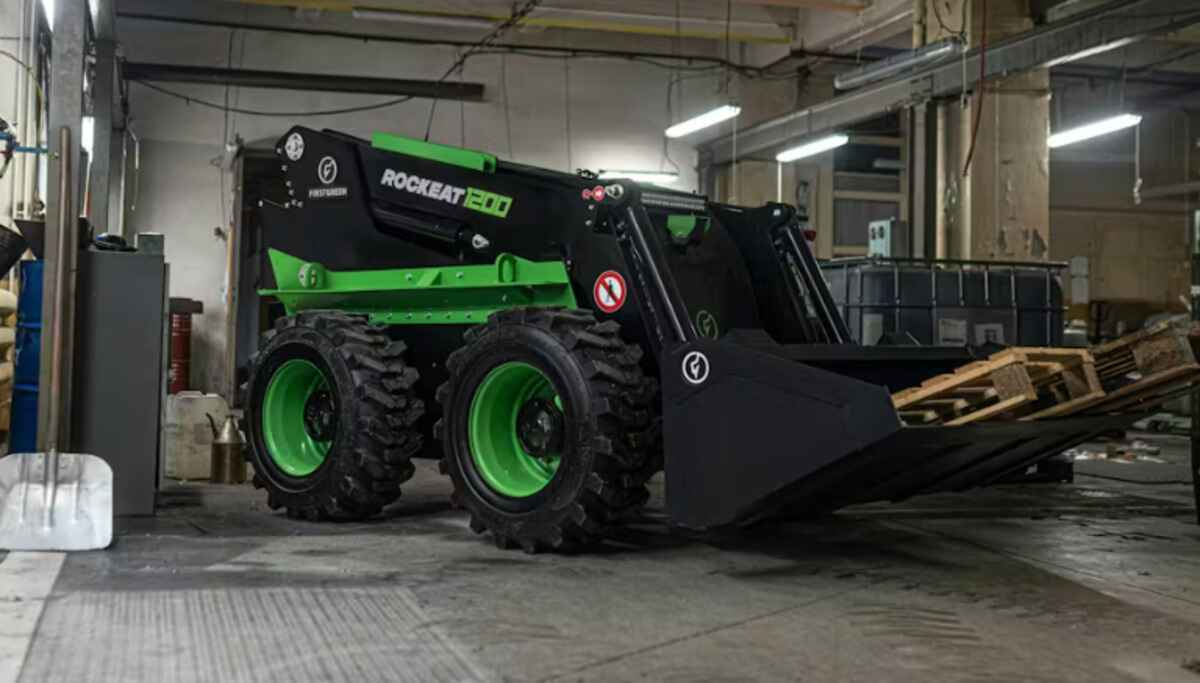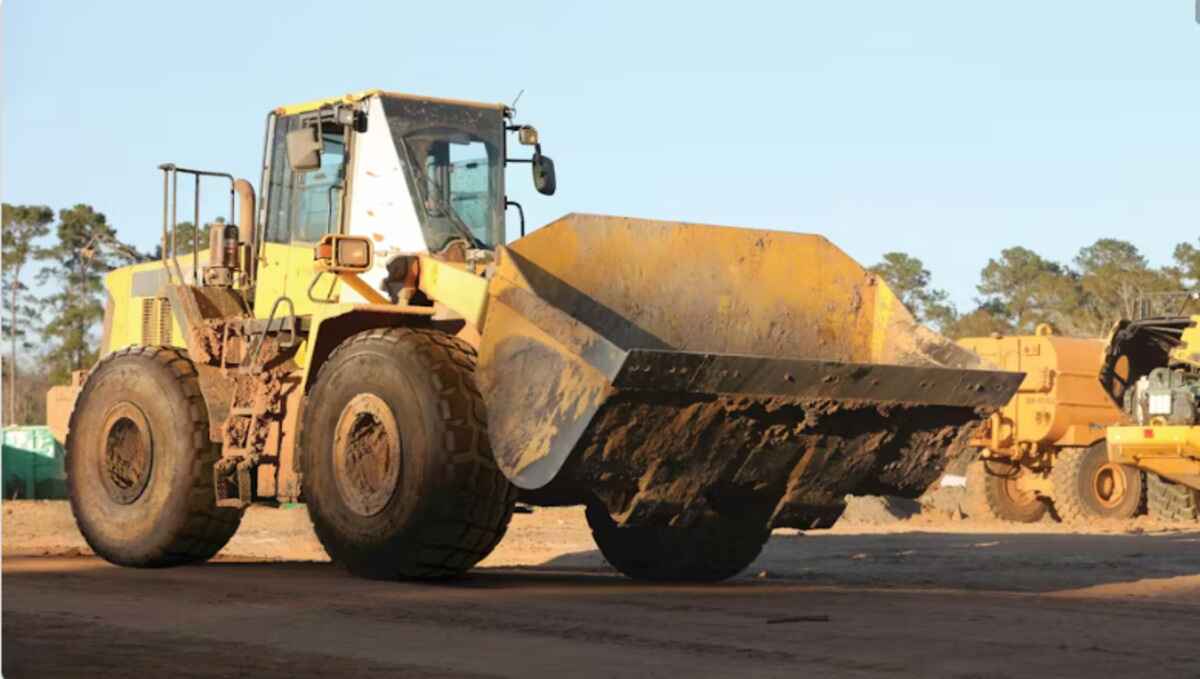Compact Wheel Loaders: “The Perfect Bridge” for Skid Steers and Larger Loaders

By design and in response to customer demand, compact wheel loaders – those with less than 90 horsepower – are being adapted to a wider range of applications.
They can be fitted with a variety of attachments beyond buckets and forks, making some competition for skid steers.
But for the most part compact wheel loaders are used for their primary purpose: loading and material handling.
And as loaders, compact models fit a specific spot. While not as nimble as compact machines with counterrotation, they still deliver good maneuverability in tight spaces.
“They provide an advantage in confined and compact supply yards where you have enough space to operate because there’s enough space for trucks to maneuver throughout the yard,” says Andrew Dargatz, product manager, Case Construction Equipment.
Moving up to mid-sized wheel loaders offers even more performance, but machine size and cost also go up quickly.
“Compact wheel loaders are the perfect bridge between larger wheel loaders and more compact equipment, such as a skid steer or CTL,” he says.
Expanding The Range
Fitted with buckets or forks, compact wheel loaders are true production machines, similar to larger wheel loaders. Their operating costs are consistent and vary only as input costs vary.
But Patrick Baker, Kubota product manager for construction equipment, says that while compact wheel loaders are “excellent at dirt work and lifting heavy loads with pallet forks, they can also be fitted with a wide range of attachments including brush cutters, grapples and stump grinders.”
One challenge, though, is trying to determine the costs of using the machines beyond their primary purpose and how that can affect project selection and bidding.
“Compact wheel loaders have the same costs as other ground-engaging equipment,” says Frank Gangi, product manager CWLs and attachments for Yanmar Compact Equipment North America.
These include fuel, tires and maintenance items such as oil and filters. But moving from traditional loading to more diverse applications may affect those costs.
“If you are in very rocky terrain that will damage tires, you should consider that cost in the bid,” Gangi says. “If it is very hilly or there are long travel distances, you should consider the additional fuel costs.”
How do you minimize escalating costs?
“In general, if you have a good plan and avoid things like wheel spin, static turning and excessive idling,” he says, “you can avoid extra wear and tear and wasted fuel.”
Tires designed for loading may not be best for other applications such as clearing, forestry and site preparation, says Luke Gribble, solutions marketing manager, John Deere. “Examine tire options to get the best match, and do understand tire load.”
A good metric for ensuring a tire’s load rating can meet job demands is ton-miles per hour, or TMPH (TKPH in countries using kilometers per hour for speed). TMPH/TKPH is often given in tire spec sheets for larger equipment but not always for tires of the size used by CWLs.
Pros And Cons Of Compact Wheel Loaders
Compact wheel loaders have many advantages over other compact equipment, including greater breakout force, load height and reach and lift capacity. They also have higher ground speed and better operator comfort and visibility.
The level of turf disruption may be less than with other machines, but it can also be more.
One advantage offered by compact wheel loaders over other compact equipment of comparable lift capacity is less horsepower. “Lower horsepower usually means lower maintenance costs and always means lower fuel consumption,” says Ethan Clowes, JCB product manager for skid steer/compact track loaders and backhoe loaders.
JCB’s two compact models, the 407 and 409, both have engines of less than 75 horsepower, use no diesel exhaust fluid and have no diesel particulate filter. Yet the 409 offers up to 10,104 pounds straight tipping load with a general purpose bucket.
Ryan Anderson, product marketing manager at New Holland Construction, says transportability puts compact wheel loaders at an advantage in some cases, depending on the application. “Because of their size, skid steer and compact track loaders are easier to trailer than compact wheel loaders,” he says. “But because of their roadability, compact wheel loaders are able to drive from job to job, a huge advantage in applications such as snow removal.”
Two of the largest operating costs favor compact wheel loaders, says Jay Quatro, commercial product manager, Wacker Neuson. Unlike skid steers, compact wheel loaders don’t skid or drag their tires, so tire wear is reduced.
“A wheel loader, whether articulating or all-wheel-steer, saves premature wear and allows the owner to get more hours out of a set of tires,” Quatro says.
Wheel loaders also typically use less fuel than a skid steer or compact track loader of the same size and capacity, he says. “This is because operators don’t run at full throttle on a wheel loader as they usually do on those other machines.”
Darren Ashton, product manager compact equipment at Volvo Construction Equipment, points to the advantages of CWLs’ larger size.
“Their higher ground clearance helps when a jobsite is rough,” he says. “The added cab height and higher speed options allow quicker, easier work for applications such as street sweeping and moving snow.”
That higher design of the CWL, however, also creates a higher center of gravity. “The stability and load capacity of a wheel loader is negatively affected the more irregular the terrain becomes,” says Quatro. Articulation amplifies this effect. “Operators should exercise caution when leaving pavement or other hard surfaces and venturing onto uneven ground or rough terrain.”
When it comes to running attachments, auxiliary hydraulics are becoming commonplace on compact wheel loaders. Many also offer high-flow options.
However, high flow is relative, says Anderson. That option on a compact wheel loader may provide 32 gallons per minute and 3,500 psi (65 hydraulic horsepower), which is significantly more pressure and double the gallons per minute of the historical CWL standard configuration. (Hydraulic horsepower is a convenient way of comparing the hydraulic power of two machines with dissimilar pressure and flow values. Hydraulic horsepower = gpm x psi ÷ 1,714, so in this example 32 x 3,500 ÷ 1,714 = 65.3 hhp.)
But skid steers and compact track loaders continue to increase their high-flow numbers as well, with 50 gpm and 4,500 psi (131 hydraulic hp) becoming available.
So a compact wheel loader even when equipped with a high-flow option may not have sufficient hydraulic horsepower to operate attachments designed for the newest, most powerful skid-steer and compact track loaders.
“Certain mulcher heads, cold planers and the like may require more hydraulic horsepower than even a high-flow compact wheel loader can provide,” says Anderson.
“But for most applications, they’ll be fine.”
Tech For Compact Wheel Loaders
While compact wheel loaders are being used for more applications than in the past, they’ll never have the versatility of other compact machines nor do they provide as good a platform for technological development. There have been tech features added to compact wheel loaders, however, especially to help them function better as loaders.
Kade Lusk, product application specialist, Cat, describes the benefits of six such features:
- Ride control improves operator comfort, reduces material spillage and machine wear.
- Speed control decouples engine speed from travel to allow full hydraulic power at low ground speeds.
- Rimpull control reduces wear on the tires and machine while increasing loading efficiency.
- Drivetrain modes match performance parameters to conditions and operator preferences.
- Differential locks improve performance in difficult underfoot conditions. “Not all diff locks are the same,” says Lusk. “Some can be engaged on the fly while some require the wheels be stopped first. Be sure you know which type you have to prevent expensive damage.”
- Programmable kickouts return the linkage to an operator-designated point on every cycle to improve efficiency and safety while reducing operator fatigue. “Contrary to what some people think, these are not mere creature comforts or added-cost items,” says Lusk. “They provide added safety and value. We can show the dollar amount saved over any given time period by utilizing these features.”
Electric Models Hit The Market
Giant loaders, distributed in North America by Tobroco Machinery LLC, has seven model series of compact wheel loaders. Available features include an optional gearbox providing travel speeds up to 21.6 mph, cab or canopy operator station and high-flow hydraulics. They come in Z-bar or X-Tra boom configurations. The X-Tra provides better visibility and more lift capacity. While Giant loaders have both articulation and oscillation, their Stabilo feature locks out oscillation for improved performance in rough conditions.
Giant partnered with Jungheinrich in designing the G200E electric wheel loader. It currently offers telescopic booms on its G1200, G3500 and G5000 models. Tele models of the G1500 and a second-generation G2700 tele loader are scheduled for release later in 2022.
Within three to five years Giant intends to have standard, telescopic and electric versions of all models.
As for electric models, more are emerging. Compact wheel loaders’ high rated operating capacities handle battery weight well. Their applications benefit from the near-instantaneous torque provided by electric motors.
“Models such as Volvo’s L20 Electric and L25 Electric are ideal for low-emission and low-noise jobs,” says Ashton. They also don’t require engine-related maintenance products including oil, oil filters, diesel particulate filters or diesel exhaust fluid.
Other Buying Considerations
Anderson says linkage options must be considered when purchasing a compact wheel loader. “The Z-bar design provides greater bucket breakout force, while the parallel or toolcarrier design provides better visibility to the forks.”
He says New Holland uses a Euro-style bucket as standard equipment, but there’s growing interest in skid-steer style buckets. These use longer lips and lower backs for improved visibility with no loss of capacity.
“The new Kubota R540 and R640 wheel loaders feature a standard multi-function operating lever,” says Baker. “This gives operators the ability to perform work quicker and more efficiently.” Those models also offer KubotaNow telematics.
Gribble says the Deere 244L and 324L have hydrostatic drive and an optional Attachment Assist Package, which includes creep mode with throttle lock. Ride control can be set to deactivate at lower speeds so it doesn’t inhibit performance when loading from a pile.
So how do you choose the right loader?
Clowes, with JCB, says lift height determines model choice. The right-sized loader is the one that just gets material into the hopper.
“That’s the loader,” he says, “that provides the customer with the best value.”
Source: https://www.equipmentworld.com/equipment/compact-equipment/article/15293110/the-pros-and-cons-of-compact-wheel-loaders




